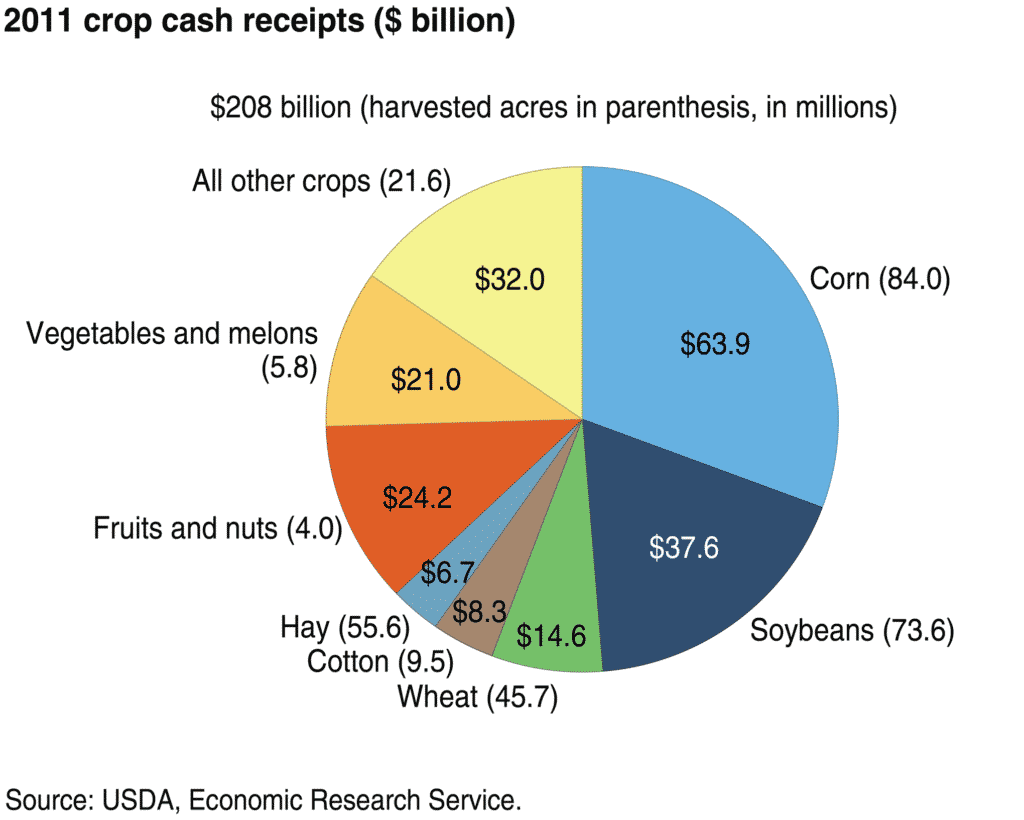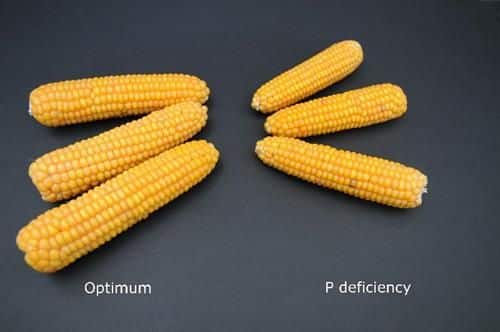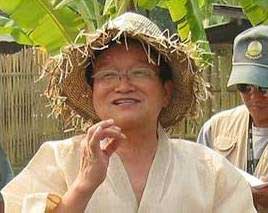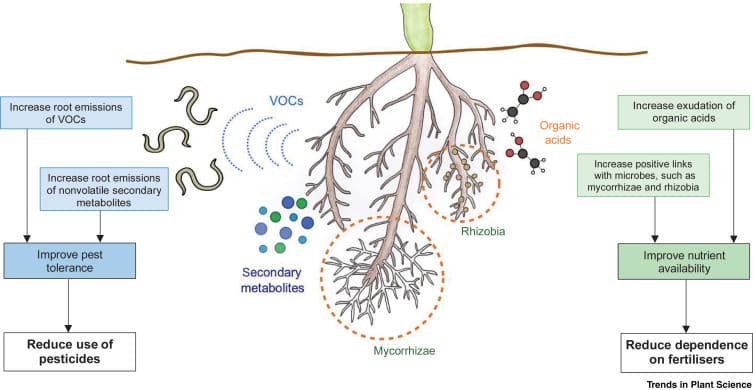Korean Natural Farming I The future of sustainable agriculture
Why should I use KNF?
Our environment is not doing well, whether it is due to climate change, overuse of pesticides or over-exploitation of fertilizers.
One major influence is the large monocultures that make up a big part of the crops grown annually around the world. In the graph below, we see that corn accounts for almost a third, the majority of which is used for animal feed.

This intensive land use has resulted in an enormous removal of phosphorus from the soil. This, coupled with a steadily increasing world population, poses a challenge to conventional agriculture which will not have enough mineral phosphate fertilizer to meet global demand by about 2050. Below we have included a small comparison between phosphorus supplies and its consumption.

The occurring shortage of phosphorus also has the effect that there is less yield per plant. This again increases the demand for agricultural land, which is decimated by the increasing sealing of areas. Now the question is: How do we combat this trend?
One promising option is to combine conventional methods in a mitigated form with a sustainable, regenerative farming style such as Korean Natural Farming. Especially by using indigenous adapted microorganisms and the very effective composting/recycling of organic waste, we can counteract this trend.
It should be clear, however, that on a large, world-supplying scale, not only natural farming methods can be used, since one must ensure a basic security or basic yield with fertilizer salts.

However, we as cannabis growers and "small scale producers" can fully work with these methods and thus reduce our Co2 footprint. This is because our beloved indoor growing method in particular is unfortunately very resource intensive.
While this is usually essential for legality reasons, KNF and Living Soil methods can save quite a bit.
How to do this and still keep your yield or even increase it, we will take a closer look at in the next articles.
What exactly is Korean natural farming?
The origin of this concept can be found in, as the name suggests, Korea. South Korea to be exact. Here the inventor Cho Han-Kyu, also called Master Cho, thought about how to achieve good results in horticulture/agriculture with old techniques, implemented in a modern way. Through this, a holistic concept was created, which owes its extraordinary results to the interaction between indigenous microorganisms and fermentation processes.

Special attention was also paid to cost minimization. By using locally available inputs and waste recycling, KNF is one of the cheapest methods to achieve good results.
Master Cho got the basic ideas behind local inputs from his studies in Japan, where he spent several years before that with highly respected horticulturists such as Yasushi Oinoue.
Back in South Korea, he combined this with the "old" techniques of the Koreans, who had already done some research in this area through kimchi and other fermentation products.
This resulted in the concept that is now trending among sustainable farmers worldwide.
It works so well that Master Cho has already been arrested due to pressure from agricultural companies in South Korea and has been imprisoned for a short time. But his teachings were still spread around the world and eventually he was released again.
How do we make use of the full potential?
As described in the previous chapter, KNF works by combining different preparations that perform different tasks.
This division makes it possible to create the perfect mixture at each stage of growth. But what is absolutely necessary, what is optional and how do you obtain your preparations?
This and much more will be described in more detail in the coming articles. This article will give you the basics of Korean Natural Farming so that you can choose which mixtures to apply at which time.
The Basics
We have already said several times that the interaction between the living organisms and parts of the soil plays the most important role in KNF, but why not just take bottles from fertilizer manufacturers, which promise the highest possible yield with their mixture?
Although these can also give good results, the labor and environmental aspect is crucial here.
To get the same yield and quality standards on a hydroponic system as on a Living Soil, you have to grow the same clone more often to meet and not exceed the respective nutrient requirements.
This is because mineral nutrients actually mean nothing other than that they are already present in their charged (ionized) form. Nitrogen, for example, is present in fertilizers as nitrate (NO3- for annual plants) or ammonium (NH4+ for perennial plants). Through the charge, the nutrients are more or less "pressed" into the roots, as substances are absorbed here via charge gradients.
Many compare this procedure with force feeding, because the plant has no chance to reject excess nutrients and thus the famous "fertilizer burns" occur.

In so-called organic cultivation, on the other hand, one uses the symbiosis between plant and microorganisms/fungi. It is true that the term "organic" is difficult to define, since rock flour is also used here to supply minerals. These are partially ionized and therefore immediately available.
However, the majority, just like other inputs, is mineralized only gradually. How fast this works depends on the mineralization rate, which in turn depends on many factors.
I will break this down in detail in the Living Soil article, but here I have written down a small list of influencing factors.
- PH-value of the soil (6-7 is best)
- Temperature (20-25°C is optimal )
- Microorganism composition
- Microorganism quantity
- Soil moisture
- Soil structure
All these factors can be positively influenced by adding KNF product. These either directly promote the microbial population, provide nourishment or displace pathogens (harmful organisms). The soil structure is also positively influenced, as the bacteria release a kind of slime that cements the soil particles together, thus creating better water-holding properties and nutrient storage.
These microorganisms can be added exogenously (from outside) to push mineralization in a certain direction. However, this is not an instant solution; the goal should always be a balanced population of different species.
In fact, if you have a complete biotope, the plant controls the amount of certain bacteria through its root exudates. Root exudates are sugar compounds on which microbes can feed excellently. The plant exchanges them for nutrients, which in turn promotes the particular microbial species that provides the desired nutrient.
A small example: The plant wants more potassium, then it releases a specific exudate matrix, which is detected by the potassium-releasing bacteria and these are then stimulated to exchange as shown by the illustration.

Furthermore, VOCs (volatile organic compounds) and organic acids are released for pathogen defense and release of nutrients.
The importance of local Inputs
Why do I talk about local inputs all the time? I know I sound like a broken record, but this factor has a serious impact on the success of KNF products.
We are taking advantage of the full range of organisms that are perfectly adapted to our location. In other words we use natural selection to find out which microbes are best suited for our spot.
We also protect our native biotope, which would otherwise be displaced by sometimes invasive species. While this may be partially intentional it breaks down the natural homeostasis (balance) and can lead to undesirable side effects.
Another point is that the plant can develop to its maximum potential by controlling its own nutrient supply. This refers not only to yield but also to the quality of the material such as terpene content and trichome number or density.
This does not mean that locally there are only good varieties. You should follow the recipes exactly and pay attention to identifying characteristics like color and odor. How to determine these exactly I will show you at the respective products.

If you are interested in the philosophy and further insights into the development and application of KNF, you should read the books of Master Cho himself. Some very good Youtube videos are also available from KNF greats such as Chris Trump or PureKNFDrake.
The Life Cycle of Plants
Now we have learned that with different inputs you promote different populations which again have an impact on the control of the plant. Now let's take a look at the life cycle of a cannabis plant and what is needed in which phases to be able to compose the different recipes.
Seedling/Clone
In this phase we don't need strong nutrient products yet, but we just need to prepare the soil and the seedling for the coming growth phase. For this we provide good microbes and prevent the expansion of the population of pathogens.
Vegetative Phase
In this phase the foundation for a successful harvest is made and we have to feed the plant accordingly. Products with very high nitrogen or amino acid content should be given together with the basic supply. This is where the root system and a stable branch/leaf system establishes itself. That is why we should apply both soil and foliar fertilizers.
Flower initiation
We now have a strong and thick growing plant and want to move into the flowering phase as quickly as possible. This should not only be fast but also corresponding with the yield potential.
To create the right basis for a high yield, the plant needs the basic supply and especially a boost of calcium and phosphorus in this phase.
Main Flower Stage/generative Stage
As the name suggests, this is the phase in which most weight is gained and quality can be significantly influenced.
Special attention should be paid to the supply of minerals and potassium/phosphorus.
It is also important to mention that we work here only with soil application, because we do not want to have residues of the agents or a risk of mold (Botrytis cinerea).
Ripening
We enter this phase in the last 1-2 weeks before harvest. Now we want to induce maximum terpene formation and maturation of the trichome heads.
For this we use similar inputs as in the main phase
A brief overview of KNF products
Now you are probably wondering, what should I use in each phase? The answer will probably be superfluous after this chapter, because I will now explain to you the main components of the KNF regime.
Here, however, it is not possible to distinguish by a strict NPK specification as with conventional preparations, because the products are so much more than pure fertilizer salts. In order not to go beyond the scope of this short overview, I will deal with production and exact modes of operation in the respective articles on the specific products.
For this reason, KNF tends to speak of tasks that the product performs. For OHN, for example, the term medicinal component is used because this strengthens general plant health.
Structure: Abbreviation = original name written out = translation = effect.
OHN = Oriental Herbal Medicine = orient. Herbal Medicine = medicine -> general plant health is strengthened by stimulating the immune systems
BRV = Brown Rice Vinegar = catalyst -> without this the PH partly fluctuates and some other inputs can not be implemented
FPJ = Fermented Plant Juice = food -> nutrients broken down/available from green plant material through fermentation + carbohydrates for
microorganisms
FFJ = Fermented Fruit Juice = food -> same principle as FPJ except that here fruiting parts are taken and therefore in the flowering phase
Application
LAB = Lactic-acid Bacteria = Lactobacteria = support -> these very strong microorganisms displace pathogens, fight Botrytis and accelerate
composting
FAA = Fish Amino-acids = fish amino acids = fuel -> this preparation gives especially in Veg really gas by the immense N-content and the completely preserved
amino acids the soil life is stimulated so strongly that the soil temperature rises and the plant makes large
growth leaps in a short time
IMO = Indigenious Microorganisms = backbone -> IMO makes up to 80% of the KNF performance and is therefore the most important ingredient, since it
brings the basic stock of soil life without which nothing works. Here there are some
gradations, but we will only go into this in the designated chapter
WSCP = Water-soluble Calciumphosphat = Bone-soluble Calciumphosphate -> Hereby we support the plant in the build-up of flower buds through
additional calcium and phosphate. This allows more nutrients to pass through the
ER (endoplasmic reticulum) and thus a better supply can be guaranteed.
supply can be guaranteed
SW = Sea Water (water + 5% salt) = Mineral Complex -> This rather simple preparation consists of only two inputs, but has a strong influence. Salt is extremely
full of nutrients and should therefore be used sparingly.
How do I combine these Inputs?
Now the question is what fits best in which stage. We have already outlined it in the description of the stages, but we still have an exact list for you here. This is the compilation as master Cho personally created it for 4L of water
| Inputs | Aufgabe | Mixtureratio | Seedling | Vegetative | Flower- Initiation | Main Phase Flower | Ripening |
| OHN | Medicine | 1:1000 | 4ml | 4ml | 4ml | 4ml | 4ml |
| BRV | Catalyst | 1:500 | 8ml | 4ml | 8ml | 8ml | |
| FPJ | Food | 1:500 | 8ml | 8ml | 8ml | ||
| FFJ | Food | 1:500 | 8ml | 8ml | |||
| LAB | Supporter | 1:1000 | 4ml | 4ml | |||
| FAA | Fuel | 1:1000 | 4ml | 4ml | |||
| SW | Minerals | 1:30 | 120ml | 130ml | 150ml | ||
| WCP | Bonebuilder | 1:800 | 5ml | 5ml | |||
From this you can already deduce it: The standard administration in each phase consists of the so-called "Maintenance Spray", which includes OHN, BRV and FPJ except in the ripening phase, here you replace the FPJ with FFJ from ripe fruit. From there you can see what the plant needs or what would still be beneficial and can then add it on top of the Maintenance Spray (MS).
For example, if there is a calcium deficiency at the beginning of flowering, you add WCP to the MS and use it as a spray.
Now we only need the recipes and seasonal tips, then we have also worked through the chapter KNF.
One tip in advance, store a lot of brown sugar and by that I really mean a lot. You will need it for the next recipes.
If you like our articles and want to stay informed about competitions, events and our passion for writing: we are also available on Facebook, Linkedin and Instagram.
Sources
- „Korean Natural Farming: Master Cho Biography“; Nico Hill for Gardenculturemagazin; 06.05.2019; (https://gardenculturemagazine.com/korean-natural-farming-master-cho-biography/)
- „Cho’s Natural Farming: Recipes and Instructions for Use“; Cho Han-Kyu
Illustrations
- Pie Chart; VOX; (https://www.vox.com/a/explain-food-america)
- Maize P Mangel; Mary; (https://www.pinterest.nz/pin/38632509278445644/?autologin=true)
- Improving Plant Phosphorus (P) Acquisition by Phosphate-Solubilizing Bacteria; (https://www.researchgate.net/publication/318963768_Improving_Plant_Phosphorus_P_Acquisition_by_Phosphate-Solubilizing_Bacteria)
- Root Nutrient Foraging; R. Giehl, N. v. Wiren; (http://www.plantphysiol.org/content/166/2/509)
- „A Return to the Wild: Root Exudates and Food Security“; C.Preece, J.Penuelas; (https://www.cell.com/trends/plant-science/fulltext/S1360-1385(19)30247-X)
- „KNF and IMO“; Nico Hill; ( https://gardenculturemagazine.com/korean-natural-farming-and-indigenous-microorganisms/ )
